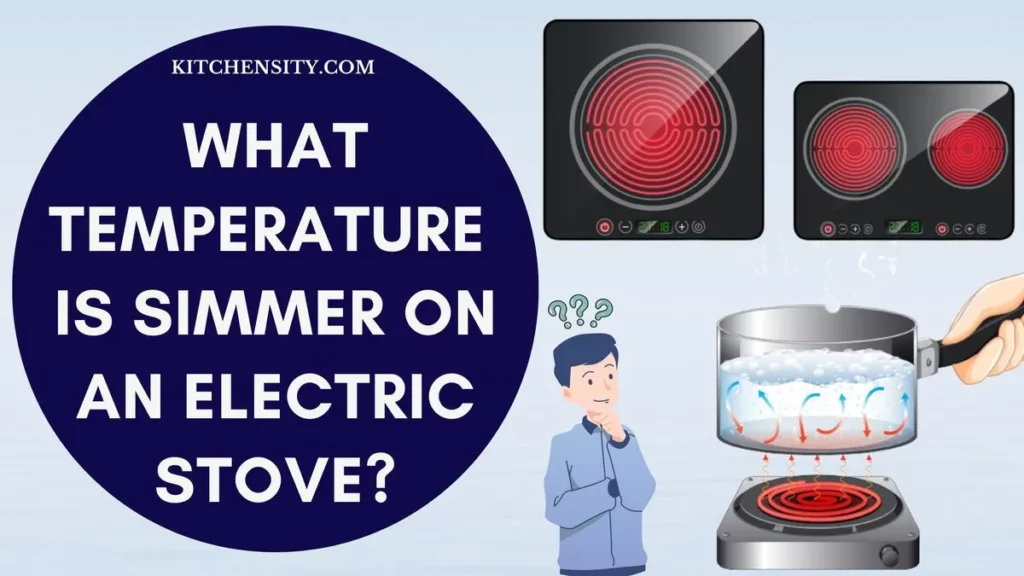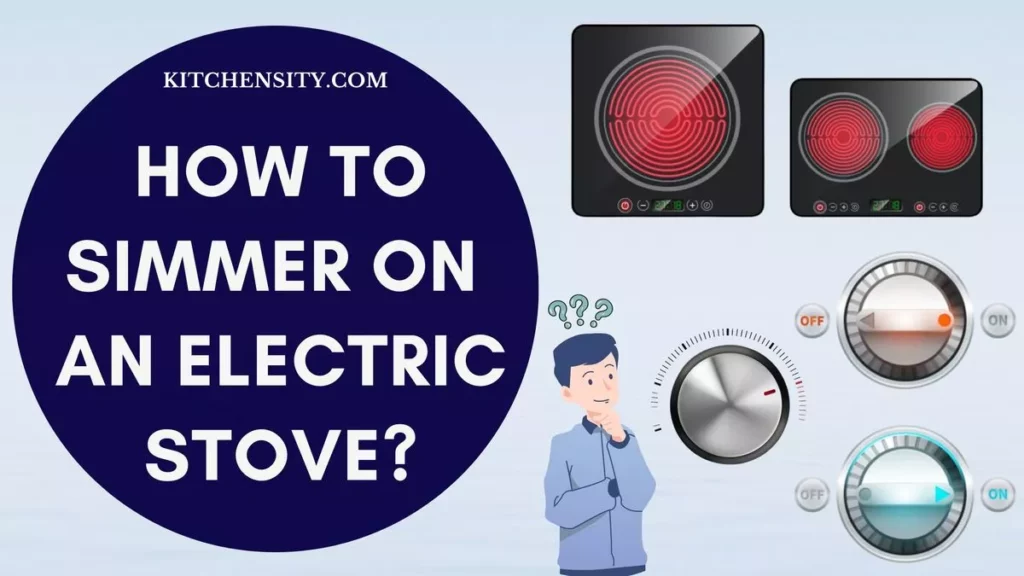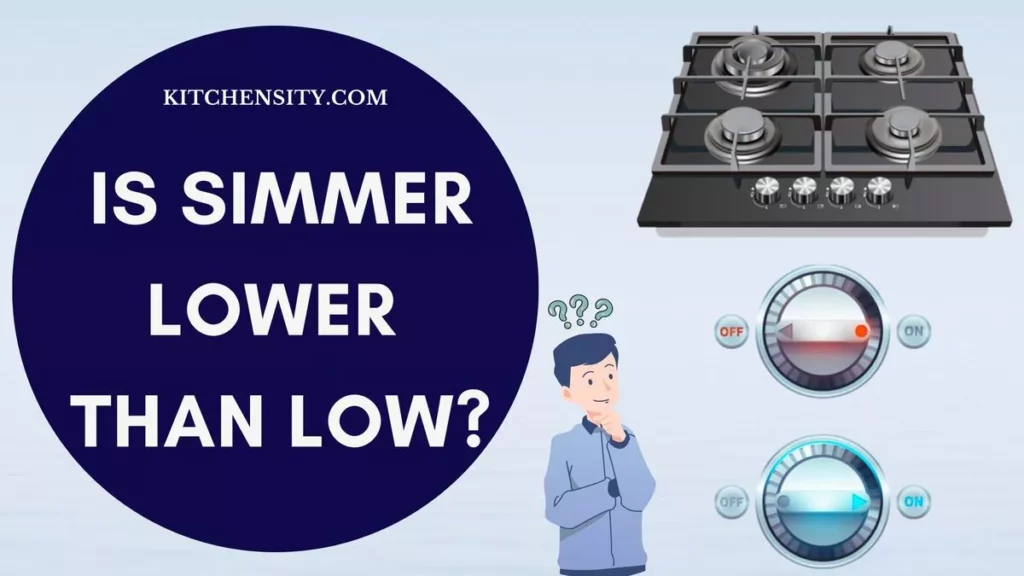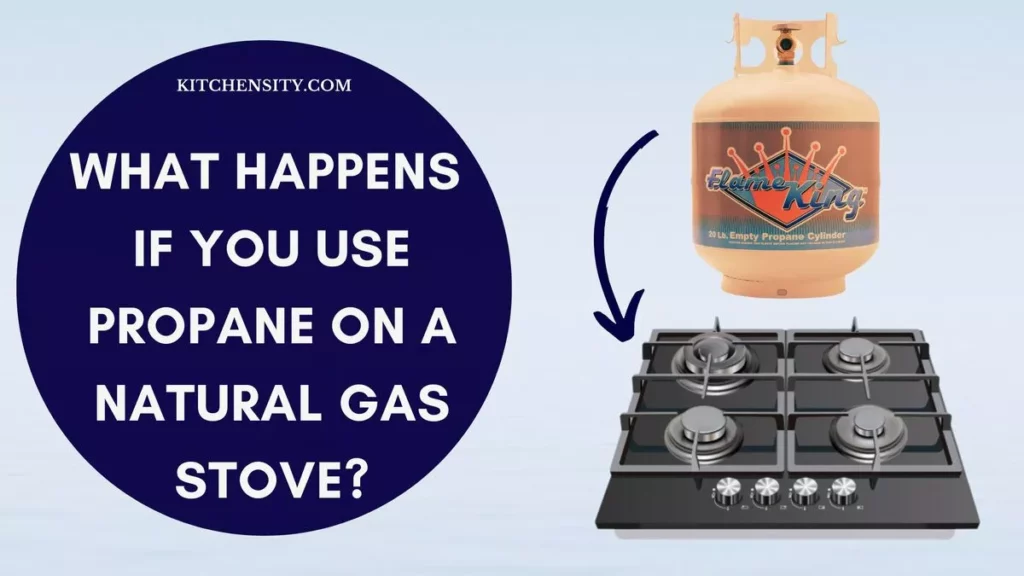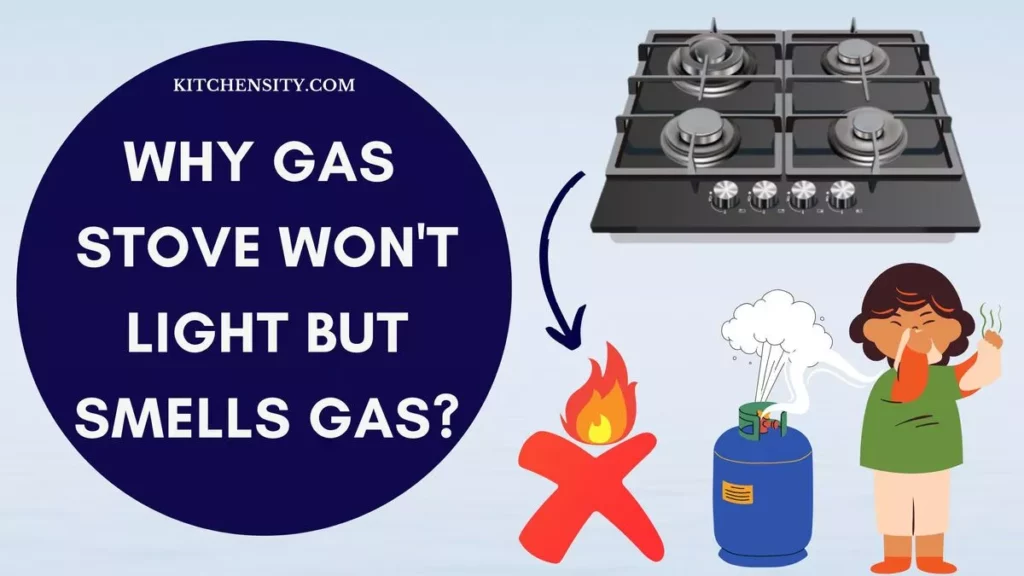In the world of home cooking, gas stoves have been a reliable and efficient choice for generations.
However, as concerns about indoor air quality and safety have grown, the question of whether gas stoves need to be vented has become increasingly important.
In this article, we will explore the reasons behind this question, the potential risks of unvented gas stoves, and the different venting options available to homeowners.
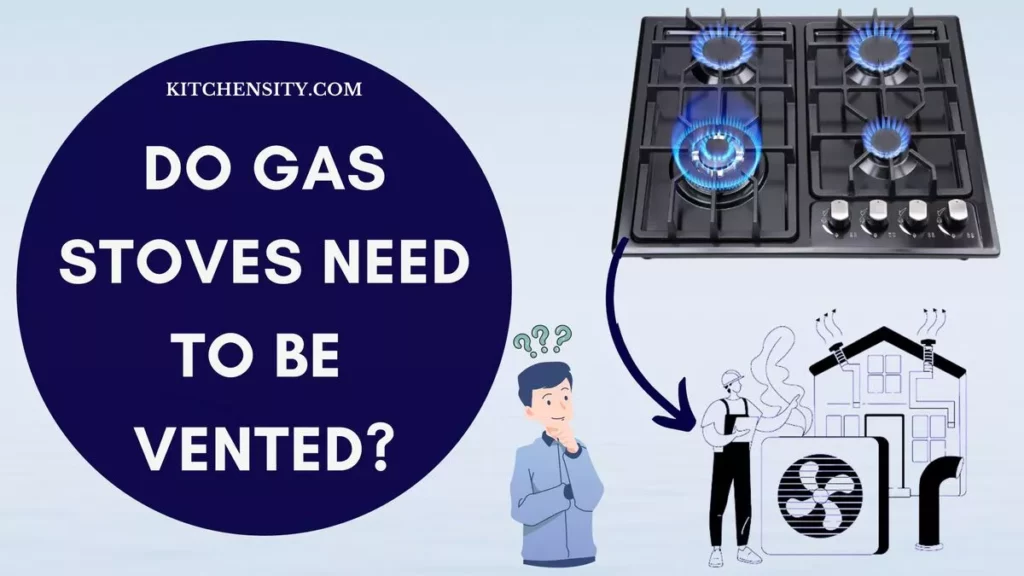
Table of Contents
- 1 Do Gas Stoves Need To Be Vented?
- 2 Understanding Gas Stoves
- 3 What Is The Importance Of Ventilation In Gas Stoves?
- 4 What Ventilation Is Needed For A Gas Stove? Types Of Ventilation In Gas Stoves
- 5 Why Does A Gas Stove Not Need To Be Vented?
- 6 What Happens If You Don’t Have A Vent Over Your Stove?
- 7 Is It Safe To Have A Gas Stove Without A Vent?
- 8 Is It Legal To Have A Stove Without A Vent?
- 9 Do Gas Furnaces Need To Be Vented?
- 10 Final Verdict On Whether Gas Stoves Need To Be Vented
- 11 FAQs (Frequently Asked Questions)
- 11.1 Is It Safe To Use A Gas Stove Without Ventilation?
- 11.2 What Are The Signs Of Carbon Monoxide Poisoning From A Gas Stove?
- 11.3 Are Ductless Range Hoods Effective At Removing Pollutants?
- 11.4 Can I Rely On Natural Ventilation Alone To Vent My Gas Stove?
- 11.5 How Often Should I Clean And Maintain My Range Hood Or Ventilation System?
Do Gas Stoves Need To Be Vented?
Yes, gas stoves need to be vented for safety and indoor air quality reasons. Ventilation systems, such as range hoods or direct ventilation systems, are essential to remove combustion byproducts, including carbon monoxide, which can be harmful when not properly vented.
Adequate ventilation ensures a safe and healthy cooking environment in your kitchen.
Also Read – How To Convert A Natural Gas Stove To Propane?
Understanding Gas Stoves
Before diving into the ventilation aspect, let’s first understand how gas stoves work. Gas stoves operate by burning natural gas or propane, generating an open flame for cooking. This combustion process releases heat and byproducts into the kitchen air, making proper ventilation crucial.
Ventilation is essential for three primary reasons.
- First, it ensures safety by preventing the buildup of carbon monoxide, a colorless and odorless gas produced during gas combustion, which can be harmful and even fatal when inhaled.
- Second, ventilation improves indoor air quality by removing pollutants like nitrogen dioxide, particularly important for individuals with respiratory conditions.
- Lastly, it helps control excess moisture, preventing mold and mildew growth in the kitchen.
What Is The Importance Of Ventilation In Gas Stoves?
Ventilation in gas stoves is of utmost importance for several crucial reasons:
1. Safety
Proper ventilation is essential to ensure the safety of your home and its occupants. Gas stoves burn natural gas or propane, producing carbon monoxide (CO) as a byproduct.
CO is a colorless, odorless gas that, when inhaled in large amounts, can lead to carbon monoxide poisoning, which can be life-threatening. Adequate ventilation helps disperse and remove CO from your kitchen, reducing the risk of poisoning.
2. Indoor Air Quality
Gas stoves also release nitrogen dioxide (NO2) and moisture during combustion. Nitrogen dioxide is an irritant and can exacerbate respiratory issues, especially in individuals with asthma or other lung conditions. Effective ventilation systems help eliminate NO2 and maintain good indoor air quality by preventing the buildup of harmful pollutants.
Also Read – Why Is My Gas Stove Not Clicking?
3. Moisture Control
Gas stoves generate moisture as a byproduct, which, when not properly ventilated, can lead to increased humidity levels in your kitchen. Excess moisture can create an environment conducive to mold and mildew growth. Ventilation helps control moisture, preventing potential health hazards and structural damage to your home.
So, the importance of ventilation in gas stoves cannot be overstated. It safeguards your health by removing harmful gases, maintains indoor air quality, and prevents moisture-related issues. Ensuring effective ventilation is essential to create a safe and comfortable cooking environment in your kitchen.
What Ventilation Is Needed For A Gas Stove? Types Of Ventilation In Gas Stoves
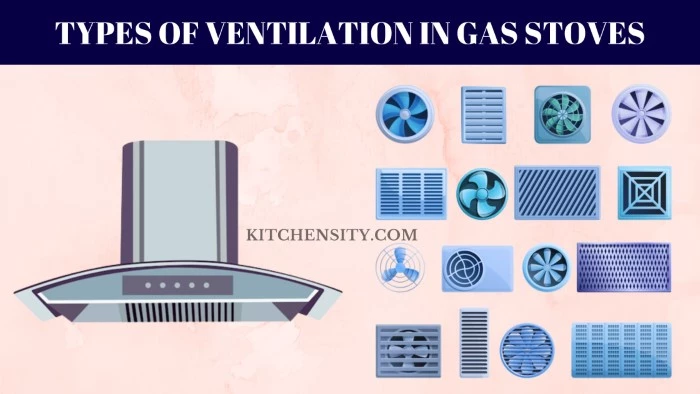
There are various types of ventilation options available for gas stoves, each with its advantages and considerations:
- Range Hoods:
- Ducted Range Hoods: These are the most common ventilation systems for gas stoves. They are installed above the stove and have a duct that directs fumes and pollutants outside. Ducted range hoods are highly effective at removing contaminants and odors from the kitchen.
- Ductless Range Hoods: Ductless hoods use filters to trap grease and odors but do not vent the air outside. While they may not address carbon monoxide and nitrogen dioxide concerns, they can improve indoor air quality to some extent.
- Natural Ventilation:
- Opening windows and using exhaust fans in conjunction with your gas stove can provide some ventilation.
- However, this method may not be sufficient to eliminate all pollutants, especially during extreme weather conditions when keeping windows open may not be desirable.
- Direct Ventilation Systems:
- Direct ventilation systems are specifically designed for gas stoves.
- They expel combustion byproducts, including carbon monoxide and nitrogen dioxide, directly outside.
- These systems are highly effective at ensuring the safety of your kitchen and home.
Each of these ventilation options has its advantages and limitations. The choice of ventilation system for your gas stove depends on factors like your kitchen’s layout, safety priorities, budget, and local building codes.
To determine the most suitable option, it’s advisable to consult with a qualified HVAC (Heating, Ventilation, and Air Conditioning) professional or an experienced installer. They can assess your specific needs and recommend the appropriate ventilation system to ensure the safety and well-being of your household while cooking with a gas stove.
Also Read – Why Gas Stove Won’t Light But Smells Gas?
Why Does A Gas Stove Not Need To Be Vented?
While gas stoves can be used without dedicated ventilation in some situations, it’s important to understand that not venting a gas stove carries certain risks and limitations. Here are some reasons why a gas stove may not necessarily need to be vented, but with important caveats:
- Natural Ventilation: In well-ventilated kitchens with ample airflow, opening windows or using exhaust fans may provide sufficient natural ventilation. This can help dissipate some of the combustion byproducts, such as carbon monoxide (CO) and nitrogen dioxide (NO2), reducing their concentration in the kitchen.
- Ductless Range Hoods: Some kitchens are equipped with ductless range hoods that use filters to trap grease and odors. While they do not vent air outside, they can help improve indoor air quality to some extent by removing particulate matter.
However, it’s essential to note the limitations and potential risks associated with not venting a gas stove:
- Safety Concerns: The primary reason for venting gas stoves is safety. When not properly vented, carbon monoxide (CO), a dangerous and odorless gas, can accumulate in the kitchen. Inhaling even small amounts of CO can lead to poisoning, which can be fatal in extreme cases.
- Indoor Air Quality: Poorly ventilated gas stoves can lead to reduced indoor air quality. Nitrogen dioxide (NO2) and moisture are also byproducts of gas combustion, and these can negatively impact your health and the condition of your home over time.
- Moisture And Odor Control: Unvented gas stoves can contribute to increased humidity and the potential for mold and mildew growth in your kitchen. Additionally, cooking odors may linger longer without proper ventilation.
While it’s technically possible to use a gas stove without dedicated ventilation, it is not advisable due to the safety and health risks involved. To ensure the well-being of your household and maintain a safe and healthy cooking environment, it is strongly recommended to have an effective ventilation system in place when using a gas stove.
Also Read – How To Fix A Yellow Flame On A Gas Stove?
If I want to summarize all the things, whether your gas stove needs to be vented or not, it can be expressed as follows:
There are a few reasons why gas stoves are not required to be vented in many places.
- First, gas stoves typically produce a relatively small amount of carbon monoxide, especially when compared to other gas appliances such as furnaces and water heaters.
- Second, gas stoves are typically used for shorter periods than other gas appliances, which means that they produce less carbon monoxide overall.
- Third, many kitchens have windows and doors that can be opened to provide ventilation.
However, there are a few reasons why it is still a good idea to vent a gas stove, even if it is not required.
- First, gas stoves can produce other pollutants in addition to carbon monoxide, such as nitrogen dioxide and particulate matter. These pollutants can also be harmful to your health, especially if you are exposed to them for long periods.
- Second, if you have a poorly ventilated kitchen, or if you use your gas stove for long periods, carbon monoxide levels can build up to dangerous levels.
Also Read – Do Gas Stoves Turn Off Automatically?
What Happens If You Don’t Have A Vent Over Your Stove?
Not having a vent over your stove can lead to several potential consequences and drawbacks:
- Poor Indoor Air Quality: Without a vent, the air in your kitchen can become polluted with cooking byproducts such as smoke, steam, and airborne particles. This can result in reduced indoor air quality, making it less comfortable and potentially unhealthy for you and your family.
- Lingering Cooking Odors: Cooking odors, including strong-smelling foods like fish or spices, can linger in your kitchen and other parts of your home. This may affect the overall ambiance of your living space.
- Increased Humidity: Cooking on a stove generates moisture as a byproduct, which can contribute to increased indoor humidity. Excess moisture can create an environment conducive to mold and mildew growth, potentially leading to health issues and damage to your home.
- Potential Safety Hazards: One of the most critical concerns is safety. Gas stoves, in particular, can produce carbon monoxide (CO) when not properly ventilated. CO is a colorless and odorless gas that can be harmful and even fatal when inhaled in large quantities. The absence of a vent can lead to the accumulation of CO in your kitchen, posing a severe health risk.
- Cooking Comfort: A vent serves to remove excess heat and steam generated during cooking, making your cooking experience more comfortable. Without it, your kitchen may become uncomfortably hot and humid while you prepare meals.
- Reduced Property Value: In some cases, the absence of a vent over the stove can impact the resale value of your home. Potential buyers often prefer kitchens equipped with proper ventilation systems for safety and comfort reasons.
So, not having a vent over your stove can result in poor indoor air quality, lingering odors, increased humidity, safety hazards, and a less comfortable cooking environment. It’s advisable to install an appropriate ventilation system, such as a range hood, to address these issues and ensure a healthier, safer, and more pleasant kitchen space.
Also Read – How Long Can You Leave An Electric Stove On?
Is It Safe To Have A Gas Stove Without A Vent?
Operating a gas stove without a dedicated ventilation system, such as a range hood or exhaust fan, can pose safety risks and health concerns. While it’s not inherently unsafe to use a gas stove without a vent, it depends on various factors, and precautions should be taken:
- Carbon Monoxide (CO) Risk: Gas stoves produce carbon monoxide (CO) as a byproduct of combustion. CO is a colorless, odorless gas that can be harmful and even fatal when inhaled in significant amounts. Without proper ventilation, there is a risk of CO accumulating in your kitchen, especially in poorly ventilated or tightly sealed spaces.
- Indoor Air Quality: Inadequate ventilation can lead to reduced indoor air quality. Gas stoves release not only CO but also nitrogen dioxide (NO2) and moisture as byproducts, which can negatively affect your health, especially if you have respiratory conditions like asthma.
- Moisture And Mold: Gas stoves also release moisture when in operation. Without ventilation, this excess moisture can contribute to mold and mildew growth in your kitchen, potentially causing health issues and structural damage to your home.
- Lingering Odors: Cooking odors, especially strong-smelling ones, can linger in your kitchen and other parts of your home without proper ventilation, affecting your comfort and the overall ambiance of your living space.
While it is possible to use a gas stove without a vent, it is not considered safe or advisable due to the potential health risks associated with carbon monoxide exposure, reduced indoor air quality, moisture-related issues, and the discomfort of lingering odors.
To ensure the safety and well-being of your household, it is strongly recommended to have an effective ventilation system in place when using a gas stove.
Also Read – How Hot Do Electric Stove Burners Get?
Is It Legal To Have A Stove Without A Vent?
The legality of having a stove without a vent depends on local building codes, regulations, and safety standards, which can vary from one jurisdiction to another. In many areas, especially where gas appliances are commonly used, there are specific requirements regarding ventilation for gas stoves and other combustion appliances.
It is generally not advisable to install or use a gas stove without proper ventilation, as this can pose safety risks, impact indoor air quality, and may not comply with local building codes. Carbon monoxide (CO) produced by gas stoves is a particular concern, as exposure to elevated levels of CO can be life-threatening.
To ensure that your stove setup complies with local regulations and safety standards, it is essential to check with your local building department or relevant authorities. They can provide specific information about the requirements for gas stove ventilation in your area and whether it is legal to operate a stove without proper venting.
Additionally, consulting with a licensed HVAC (Heating, Ventilation, and Air Conditioning) professional or gas appliance installer is advisable to ensure that your gas stove is installed and operated safely and in compliance with local laws.
Also Read – How To Fix A Yellow Flame On A Gas Stove?
Do Gas Furnaces Need To Be Vented?
Yes, gas furnaces need to be vented. Proper venting is a crucial safety requirement for gas furnaces, just as it is for gas stoves. Here are the key reasons why venting is essential for gas furnaces:
- Exhaust Of Combustion Byproducts: Gas furnaces burn natural gas or propane to generate heat. This combustion process produces byproducts, including carbon monoxide (CO) and water vapor. Venting ensures that these potentially harmful byproducts are safely expelled from your home.
- Prevention Of Carbon Monoxide (Co) Buildup: CO is a colorless, odorless, and highly toxic gas that can be produced during incomplete combustion of natural gas. Without proper venting, there is a risk of CO accumulating in your home, which can lead to carbon monoxide poisoning and pose a severe health hazard.
- Indoor Air Quality: Venting helps maintain good indoor air quality by preventing the buildup of pollutants like CO and ensuring that the furnace’s combustion process does not negatively impact the air you breathe in your home.
- Moisture Control: Gas furnaces also release moisture as a byproduct of combustion. Proper venting helps manage this excess moisture to prevent issues such as mold and mildew growth and associated health concerns.
- Safety And Compliance: Most building codes and safety regulations require gas furnaces to be vented properly to ensure the safety of occupants. Compliance with these codes is essential to avoid potential legal and safety issues.
The specific venting system required for a gas furnace can vary based on factors such as the furnace’s type (e.g., natural draft or forced draft), the local building codes, and the furnace’s location within your home. In many cases, gas furnaces use metal flue pipes that lead combustion byproducts safely outside.
It’s important to have a qualified HVAC (Heating, Ventilation, and Air Conditioning) professional install and maintain your gas furnace and its venting system to ensure safe and efficient operation.
Also Read – Orange Flame On The Gas Stove: Causes And Fixes
Final Verdict On Whether Gas Stoves Need To Be Vented
The importance of proper ventilation for gas stoves cannot be overstated. While it may be tempting to use a gas stove without dedicated ventilation, this practice poses significant safety risks and can adversely affect indoor air quality.
Gas stoves produce combustion byproducts, including carbon monoxide (CO) and moisture, which, when not vented correctly, can lead to health concerns and potential structural damage to your home. Carbon monoxide is particularly dangerous, as it is both colorless and odorless, making it imperceptible to the senses yet capable of causing severe illness or even death.
To ensure a safe and healthy cooking environment, it is highly recommended to invest in an appropriate ventilation system. Ducted range hoods, ductless hoods, or direct ventilation systems can effectively capture cooking fumes, remove pollutants, and expel harmful gases outside your home.
Safety, both in terms of avoiding carbon monoxide poisoning and maintaining good indoor air quality, should be your top priority when using a gas stove. Complying with local building codes and seeking professional guidance for ventilation system installation and maintenance are essential steps in ensuring the well-being of your household.
By doing so, you can enjoy the benefits of gas cooking while safeguarding your health and the integrity of your home.
Also Read – What Happens If You Use Propane On A Natural Gas Stove?
FAQs (Frequently Asked Questions)
-
Is It Safe To Use A Gas Stove Without Ventilation?
No, it is not safe to use a gas stove without ventilation. Without proper ventilation, the byproducts of gas combustion, including carbon monoxide and nitrogen dioxide, can accumulate in your kitchen, posing serious health risks.
-
What Are The Signs Of Carbon Monoxide Poisoning From A Gas Stove?
Signs of carbon monoxide poisoning include headache, dizziness, nausea, weakness, confusion, and shortness of breath. If you experience these symptoms while using a gas stove, immediately turn it off, ventilate the area, and seek medical attention.
-
Are Ductless Range Hoods Effective At Removing Pollutants?
Ductless range hoods can help improve indoor air quality by trapping grease and odors, but they do not vent carbon monoxide and nitrogen dioxide outside. For optimal safety, consider ducted range hoods or direct ventilation systems.
-
Can I Rely On Natural Ventilation Alone To Vent My Gas Stove?
While opening windows and using exhaust fans can provide some ventilation, it may not be sufficient to eliminate all pollutants, especially during extreme weather conditions. Using a dedicated ventilation system is recommended for comprehensive gas stove ventilation.
-
How Often Should I Clean And Maintain My Range Hood Or Ventilation System?
Regular cleaning and maintenance are crucial to ensure the effectiveness of your ventilation system. Check and clean filters, ducts, and fans as recommended by the manufacturer to keep the system running efficiently and safely.
🔧 Stove Expert | 🔥 Gas Guru | 🏠 DIY Enthusiast | 🎨 Painter Extraordinaire
John Davis is your go-to source for all things stoves, from expert repairs to maintenance tips. With a deep understanding of gas systems, including natural and propane, John ensures your kitchen stays cooking safely. His passion for DIY home and kitchen projects shines through his stunning paint transformations. Trust John to bring warmth and functionality to your home, one stove at a time.

